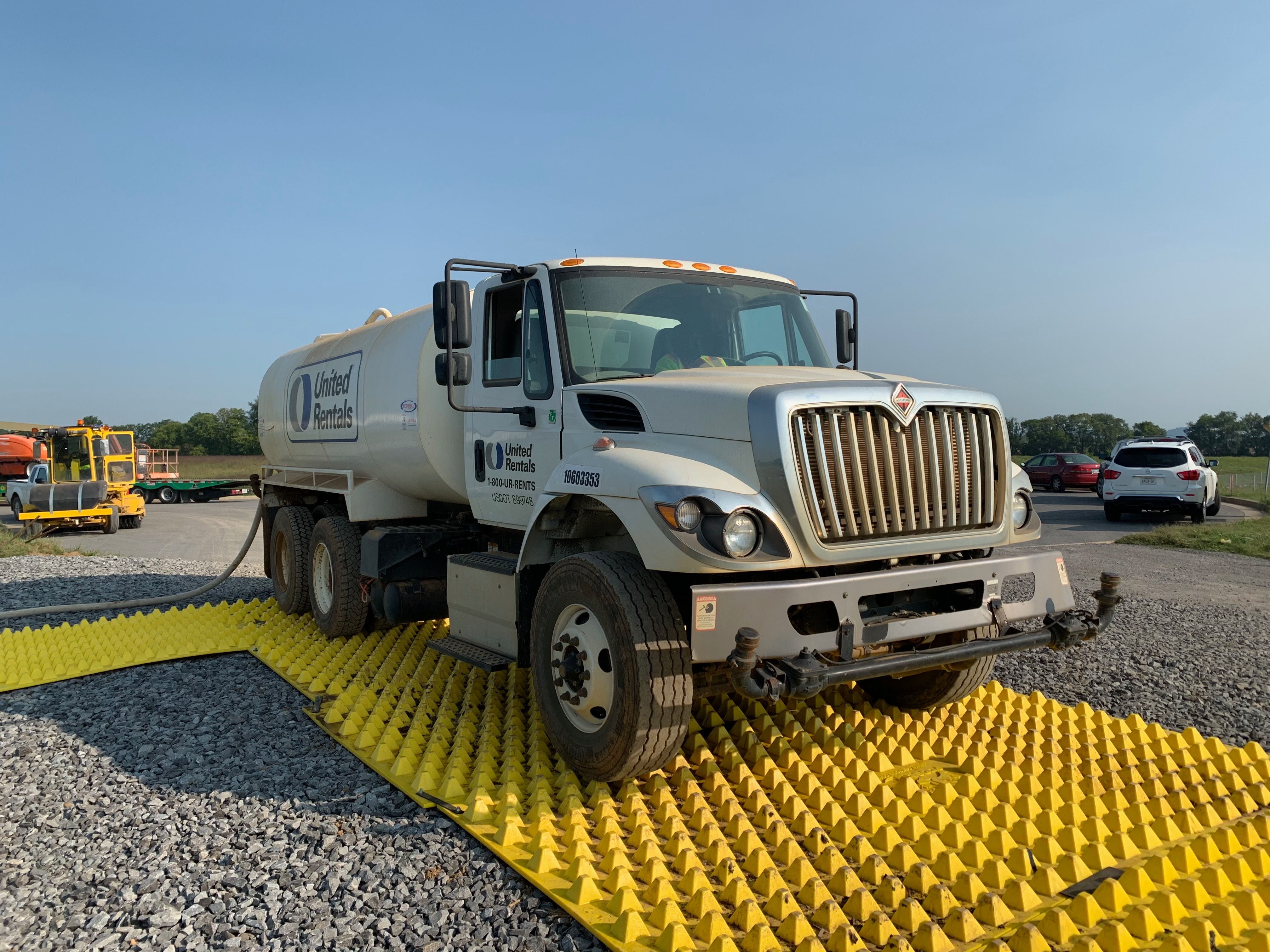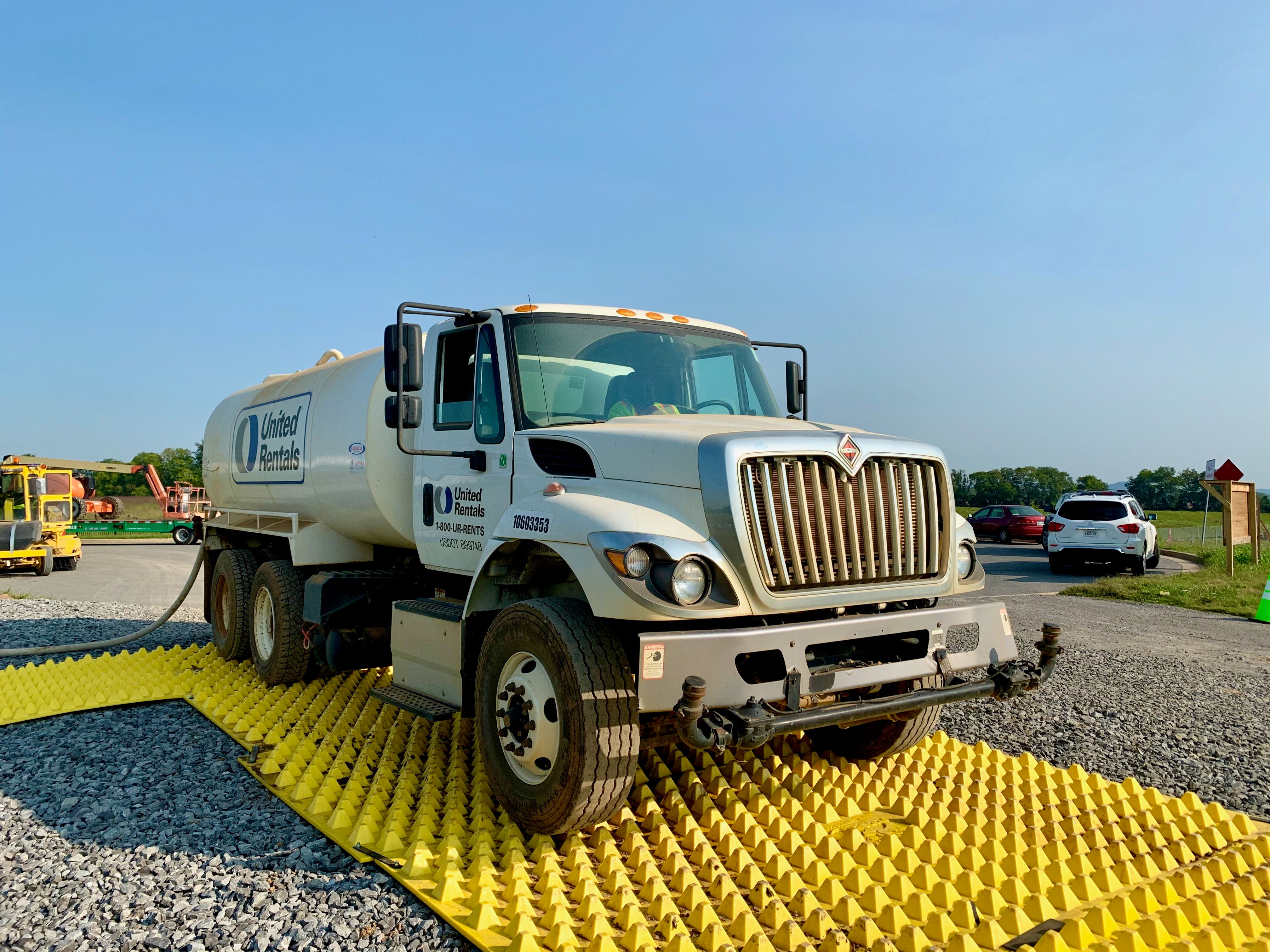Tennessee Construction Exit: Temporary Sediment Control Device
The Tennessee Department of Environment & Conservation (TDEC) administers Tennessee's NPDES stormwater permitting program under the federal Clean Water Act (CWA). TDEC, in partnership with the University of Tennessee, Knoxville, supports a two-level Tennessee Erosion Prevention and Sediment Control (TNEPSC) training program. The Level 1 Fundamentals course provides contractors, developers, inspectors, and designers with a working knowledge of the Construction General Permit and core erosion and sediment control practices. The Level 2 Design Principles course is an advanced workshop for engineers and other design professionals. Under the current Construction General Permit, individuals performing site assessment inspections for projects discharging to Impaired or Exceptional Tennessee Waters must have completed at least the Level 2 course.
Construction sites that disturb one acre or more of soil, or that are part of a larger common plan of development that will cumulatively disturb at least one acre, are required to obtain NPDES construction stormwater permit coverage from TDEC. A Notice of Intent (NOI) is submitted before the commencement of construction or operation. The TN EPSC website includes links to the TNR100000 CGP, NOI, and other forms needed to acquire a stormwater permit.
Tennessee TNR100000 NPDES Stormwater Permits
To obtain a Construction Stormwater Permit, TNR100000, contractors will submit a Stormwater Pollution Prevention Plan (SWPPP) and Notice of Intent to the TDEC. The SWPPP contains a site-wide plan that details Best Management Practices (BMPs) to be used for mitigating stormwater pollution. One essential BMP is the use of a Construction Exit. These entrances are designed to minimize the amount of polluted sediment that is tracked off the jobsite onto impermeable surfaces, such as asphalt roadways. Polluted sediment on roadways will wash down storm drains and enter protected rivers and streams.

Construction Exit Detail in Tennessee
Chapters 4 and 7 of the Tennessee Erosion and Sediment Control Handbook include Practice 7.28: Construction Exit, which states that Construction exits "reduce or eliminate the transport of material from the construction area onto a public roadway by providing an area where mud and soil can be removed from the tires of construction vehicles." The Manual also indicates that Stabilized Construction Entrances should be applied "wherever construction traffic leaves a construction site and enters a public right of way." The handbook indicates that "Most often, construction exits are constructed of clean stone. However, several manufactured construction exits are available that do not include stone."
Details of a stone construction entrance are included in the handbook. TDOT Construction Entrance standard drawing EC-STR-25 shows a temporary construction exit with a minimum length of 50 feet and a width of 12 to 20 feet, constructed with Class A-3 machined riprap over geotextile fabric to provide a stable, rock-surfaced entrance. Soils that contain a high percentage of clay may require a more robust tire washing facility, as described in Section 7.29. Lastly, contractors are instructed to manage stormwater around the entrance and avoid steep grades and exits in or near curves in public roads.
All exits must be periodically reviewed to ensure they function correctly. When dirt builds up on the rock, the top layer is scraped and replaced with clean rock. Sediment tracked off the construction project must be cleaned up before the next rain event or within 7 days, whichever is shorter.
Manufactured construction exits have different installation and maintenance requirements than rock. FODS is a manufactured construction exit that can be installed on dirt or pavement and is reusable on multiple projects.
TDOT Construction Entrance Specifications
The Tennessee Department of Transportation has developed a SWPPP, which is used on projects of all sizes across the state. The construction entrance specifications are similar to those established in the Erosion and Sediment Control Handbook. TDOT Construction Entrance standard drawing EC-STR-25 shows a temporary construction exit with a minimum length of 50 feet and a width of 12 to 20 feet, constructed with Class A-3 machined riprap placed over geotextile fabric.
TDOT has also pre-approved the use of FODS-manufactured Construction exits as a replacement for the EC-STR-25 spec. FODS Reusable Construction entrance system is a composite matting system designed to clean vehicle tires as they exit the job site. FODS do not become compacted and are ideal for high traffic volume sites.

FODS Manufactured Construction Exit
The FODS Trackout Control System consists of a single layer of reusable, composite construction exit mats specifically designed to remove sediment from vehicle tires. FODS is a modular device that is easily customizable for each project. The unique design of the mats traps more sediment and remains effective even after rain events.
A standard layout is a 1x5T, which provides a wide turning radius and 35' of length. FODS are more effective than aggregate construction entrances, so this layout is used to replace up to 70' rock construction exits.
A unique advantage of using FODS is that it can be easily reused & relocated throughout various phases of a construction project. Engineered for high durability, FODS mats are designed to have a service life of 10 years or more.
FODS construction entrance mats can be installed without excavation and over a variety of substrates. Maintenance is needed after sediment builds up to 2.5" between the pyramids. Instead of refreshing with additional rock, the system can be restored by cleaning with a street sweeper or FODS shovel.
FODS Approved For Use By The Tennessee DOT
The FODS Trackout Control System is approved for use as an alternative to the Temporary Construction Exit described in TDOT Standard Drawing EC-STR-25. The approval grants permission for local authorities to allow the use of FODS on TDOT projects across the state. The FODS reusable construction entrance system is ideal for use on highway, pipeline, and other phase projects because the system is highly effective and can be relocated as needed throughout the project. The rockless BMP can also increase safety by reducing the risk of rocks entering active lanes of travel.
Contact us to learn more about using FODS on a Tennessee DOT project.
FODS Construction Entrances on Projects In Tennessee
Since the Tennessee Department of Transportation approved FODS Reusable Construction Entrance as an alternative to traditional rock construction entrances, contractors across the state have been benefiting from the practical design and cost savings of the system. The FODS construction exit system was first used in Tennessee on the I-440 Highway Project. Kiewit used FODS construction exits to provide a portable solution for highway sediment and erosion control. The FODS reusable construction entrance can be relocated for each phase of the project and, in addition, reduces the liability of introducing riprap to active roadways.
DPR Construction is also using FODS mats as it begins the sitework on the Facebook data center in Gallatin. FODS reusable construction entrance mats provide industry-leading ROI to contractors and dirt workers and require less ongoing maintenance costs to refresh the entrance. With FODS entrances in use, the project can maintain clean roads during rain events and high traffic without requiring additional aggregate.

Located in central Colorado, FODS LLC is proud to play a role in protecting natural resources. FODS recyclable mats offer an environmentally friendly solution for trackout control, with a service life of over 10 years. Our success in the market is a testament to the industry's shift away from one-time-use, aggregate construction entrances towards reusable and sustainable alternatives. Protecting the environment is an effort that requires continuous innovation, and we are proud to offer these novel solutions to contractors around the world.
Please contact us for references or information on utilizing FODS as your construction entrance in Tennessee.

